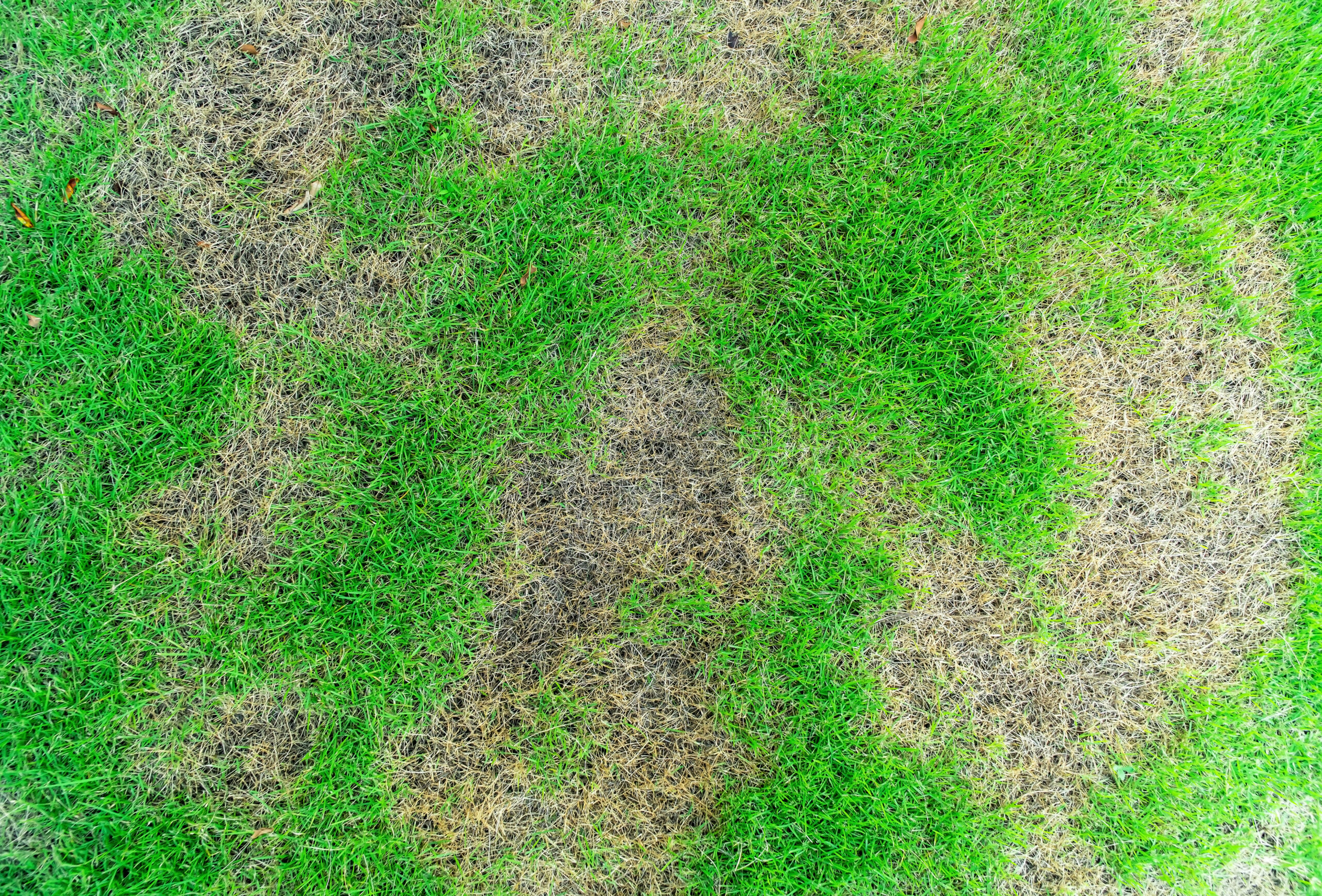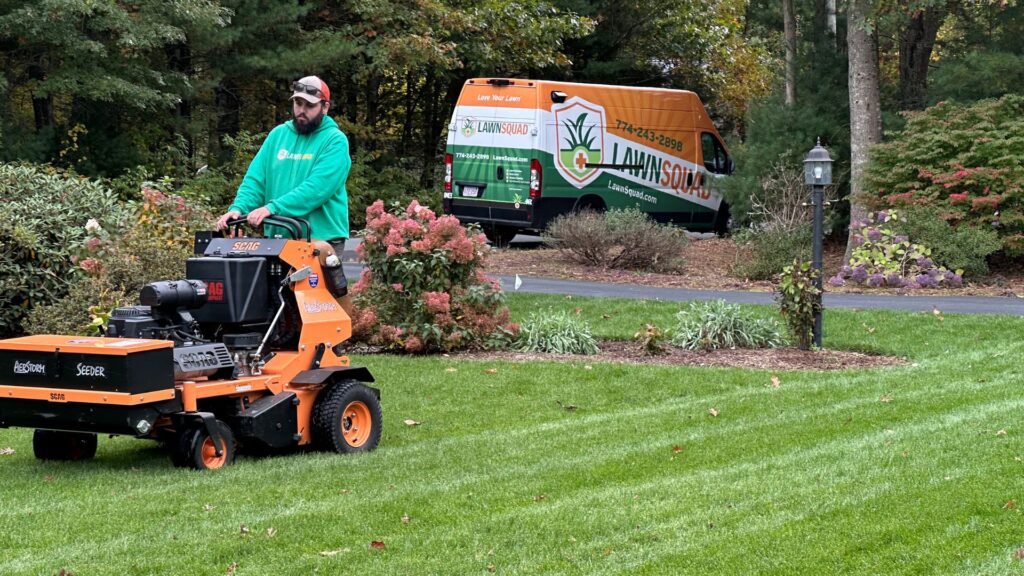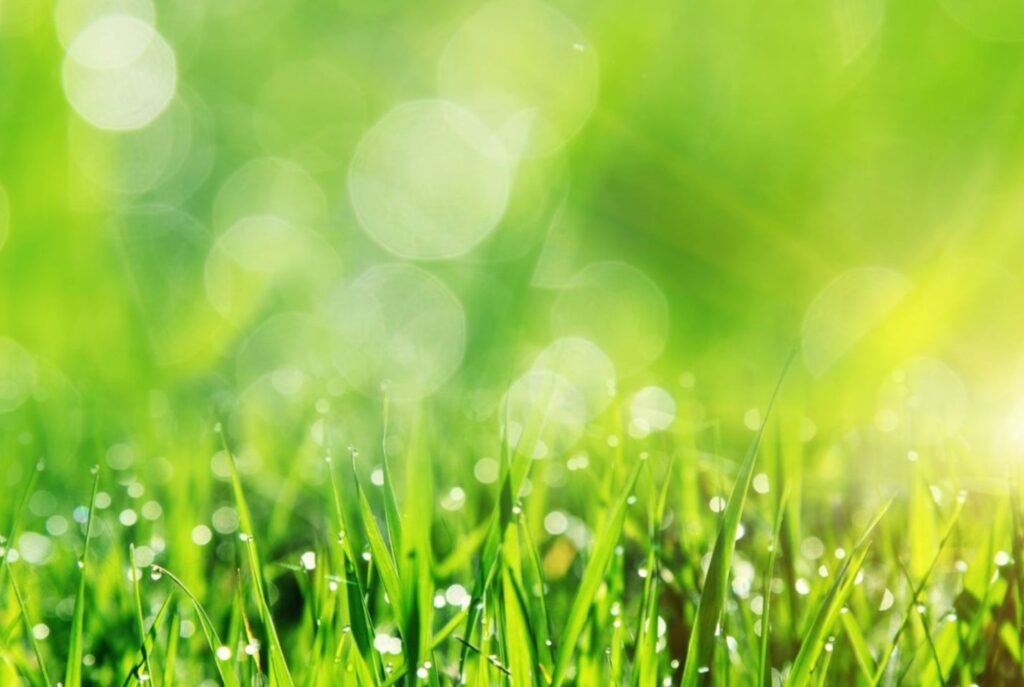As the snow melts and your yard finally reappears, you might notice it doesn’t look like you remembered. Thin patches, discolored spots, and bare areas are standard after a long winter in Cincinnati, but that doesn’t mean your lawn is doomed for the season. With the right care, your grass can bounce back.
At Lawn Squad®, we’ve helped plenty of homeowners bring their lawns back to life after cold-weather stress.
Snow Mold Leaves More Than Just a Mess
Once the snow clears, you might spot odd-looking patches across your yard. Some might look like grayish or pinkish webs stretched across the grass. That’s not dirt or leftover snow — it’s likely snow mold. This cold-weather fungus develops when snow covers unfrozen or poorly drained ground for extended periods, especially in shady or damp spots. As it spreads, it smothers the grass underneath, leaving dead-looking patches once the snow melts.
You won’t always catch it happening during winter because it develops under the snow cover. But once things thaw, the damage becomes easy to spot. The grass may recover if you gently rake those patches and let them dry out. Sometimes it doesn’t, and that’s when you need to reseed. Snow mold doesn’t stick around all year, but it can leave a weak, thin lawn behind if you don’t step in to help the area bounce back with a little fresh seed and airflow.
Compacted Soil Keeps Grass From Growing
Grass needs space to breathe. If the soil under your lawn gets packed down during the Cincinnati winter, your grass has difficulty growing in spring. Heavy snow, foot traffic, and even the weight of snowblowers or sleds can flatten the top layer of soil and make it too dense. Water can’t soak in easily, and roots don’t spread well in tight, airless ground.
If your lawn feels solid when you walk across it or you notice water sitting too long after it rains, the soil underneath might be packed too tightly. That’s a sign of compaction. It’s a common problem, and the best way to fix it is with aeration.
A crew can use special tools to open up the ground by making small holes across the yard. That gives air, moisture, and nutrients a better path to the roots. Once the soil loosens up, the grass has room to grow. You’ll usually see healthier color and better coverage, especially if you reseed afterward.
Salt Damage Leaves Dry, Brown Edges
If you have sidewalks or driveways that border your lawn, you might notice that the grass near the edges looks worse than the rest. That’s often caused by salt. De-icing salt keeps your pavement safer in winter, but it can wash into the lawn and draw moisture away from the grass roots. Over time, it burns the blades and creates dry, pale patches that struggle to bounce back.
You can help those areas recover by flushing the soil with water to push the salt deeper and dilute it. Once that’s done, you may need to reseed or spot-treat the area to bring color and growth back. Treatments are also available that help break up salt-heavy soil so new grass can grow better. If your lawn touches a salted sidewalk, it’s worth checking every spring so you can catch the damage early and avoid losing that section completely.
Foot Traffic Adds Up More Than You Think
You might not think walking across the yard in winter would do much harm, but when the grass is frozen or wet, even a few extra steps can press the blades down and damage the crowns of the plants. If the same paths get used all season, for garbage bins, shortcutting across the yard, or kids playing in snow, you’ll probably see worn trails once things start to warm up.
Grass in these areas often comes back thinner, or sometimes not at all, without a little help. The roots get weaker from the pressure, and they also don’t hold soil. Spring is a good time to take stock of your lawn’s footpaths and decide if they need extra care. Aeration and overseeding in these spots help bring back strength. If traffic is unavoidable, you might consider adding stepping stones or a mulch path so your lawn doesn’t take the full brunt of every trip.
When Disease Lingers Beyond Winter
Some lawn diseases don’t go away with the cold. Snow mold shows up after winter, but other fungal issues — like dollar spot, red thread, or leaf spot — can stick around into early spring, especially if your lawn didn’t get much attention before the cold set in. These kinds of problems tend to show up in spots where air doesn’t move well or where thick thatch holds too much moisture.
If patchy areas have odd coloring — like straw-yellow or reddish tips — or if the grass seems stringy and weak, it might be more than just winter stress. A technician trained in lawn disease control can inspect the turf and apply targeted treatments.
These products stop the fungus from spreading and give your lawn a better chance to grow thick and strong. Trying to guess the issue based on appearance alone can waste time and money, so this is one of those situations in which it pays to ask a professional for a diagnosis.
Overseeding Helps Fill Bare Spots Naturally
When your lawn looks thin or bare in places, overseeding gives you a chance to thicken it without tearing up the whole yard. This process adds new grass seed over the existing lawn, helping fill in weak spots and improve overall color.
After winter, this step becomes especially useful in areas that are hit by snow, mold, salt, or foot traffic. In our region, tall fescue, Kentucky bluegrass, and perennial ryegrass are the most common cool-season grasses used for overseeding.
The key is pairing overseeding with aeration. When you break up the soil first, the seed can make better contact with the ground and settle into the pockets created during aeration. You get better germination, stronger roots, and a more even look as the lawn fills in. A spring overseed can make a big difference in how your lawn handles heat later in the season. New grass helps block weeds, too, since a thick lawn leaves fewer openings for unwanted plants to take hold.
Fertilizer and Weed Control Set the Tone for Spring
Your lawn wakes up hungry. After a long winter, it needs nutrients to kickstart growth and push out new blades. Spring fertilizer gives your grass the nitrogen it needs to green up and start spreading again. At the same time, a pre-emergent weed treatment can stop crabgrass and other invasive plants before they even have a chance to sprout.
Timing matters here. Applying the right blend at the right point in the season gives your grass a better start without overfeeding it or encouraging fast, weak growth. A slow-release formula often works best. That way, the lawn gets what it needs over several weeks instead of all at once. If you’ve had weed problems in the past, spring is when you set the tone for how aggressive those weeds will be. Get ahead now, and you’ll spend less time pulling and treating them later in the season.
Maintenance Plans Make Lawn Recovery Easier
Spring lawn care doesn’t always mean guessing what to do next. Some service providers offer ongoing maintenance plans that include aeration, overseeding, disease control, and fertilizer spread throughout the year. Signing up for a plan means you’ll have a clear schedule for when each treatment happens, and you’ll know someone is keeping an eye on your lawn’s overall health.
Programs like this also help you plan ahead. You’ll get a better sense of how your lawn is aging and when you might need bigger work like reseeding or drainage fixes. Some companies even offer priority service, repair discounts, or waived visit fees for members. If you’re tired of reacting to patchy grass every spring, a set routine takes the guesswork out of it and gives your lawn consistent support through the seasons.
Bring Your Lawn Back to Life
A patchy lawn after a Cincinnati winter isn’t unusual, but it also isn’t permanent. Whether you’re dealing with salt damage, snow mold, or compacted soil, it’s fixable. If you live in Cincinnati or the surrounding area, Lawn Squad® is here to help your grass recover from winter.
Call us today to schedule your spring lawn treatment or learn more about our maintenance plans customized for Ohio lawns.






